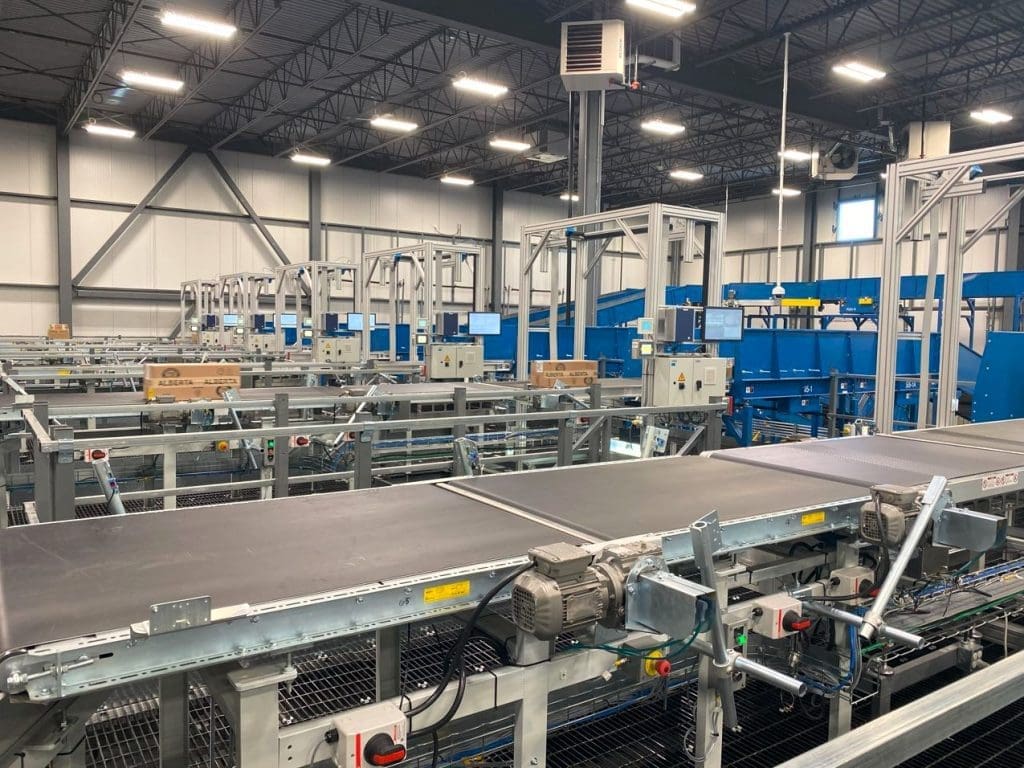In Canada, the third-party logistics (3PL) industry is experiencing robust growth as businesses increasingly look to outsource logistics operations to remain agile and cost-effective. With e-commerce demand surging and the supply chain landscape becoming more complex, 3PL providers offer a scalable solution for warehousing, transportation, and distribution. Yet, as more businesses turn to 3PL solutions, having a well-integrated sortation system is crucial to streamline operations and handle the rise in order volumes effectively.
3PL Growth in Canada by the Numbers
The growth of 3PL services in Canada reflects a clear shift in how companies are managing logistics. Recent industry data reveals that:
- The Canadian 3PL market size was valued at approximately CAD 33.32 billion in 2022 and is expected to grow at a compound annual growth rate (CAGR) of over 5% through 2026.
- Around 86% of Canadian companies outsource at least one part of their logistics operations, according to a survey by Canadian Shipper.
- With e-commerce sales growing nearly 14% annually in Canada, 3PL providers are expanding their capacities and services to meet the heightened demands of both B2C and B2B clients.

Why Businesses are Turning to 3PL
Businesses increasingly turn to third-party logistics (3PL) providers for strategic and operational benefits, as seen in Canada’s expanding 3PL market, which is projected to reach $40.55 billion CAD by 2029. By outsourcing logistics, companies can save significantly—up to 15-30% on warehousing and distribution costs—through shared resources and efficient operations. This partnership not only frees up capital but also offers flexibility, empowering companies to respond to changes in customer demand or market conditions with greater agility.
With logistics expertly managed, businesses can dedicate more resources to innovation, customer engagement, and market growth. This approach enables companies to scale effectively, improve customer satisfaction, and maintain a strong competitive edge—crucial factors for long-term success in a dynamic market. The result is a stronger operational foundation, positioning companies to drive sustainable growth while 3PL providers handle logistics complexities.
| Canada’s expanding 3PL market, which is projected to reach $40.55 billion CAD by 2029
The increase in 3PL adoption can be attributed to a range of factors:
Cost Efficiency: 3PL providers offer shared warehousing, reducing costs for businesses that would otherwise need to maintain their own facilities.
Scalability for Peak Seasons: As demand fluctuates, 3PLs allow companies to scale operations up or down without the heavy investment of internal resources. With a scalable system, 3PL providers can handle significant order increases during peak seasons, such as holidays, without the need for extensive short-term hiring. This adaptability makes automated sortation a strategic investment for 3PLs looking to expand their market reach and manage customer expectations effectively.
Improved Delivery Speeds: Many 3PLs have extensive networks that enable faster shipping times, a significant advantage in the age of two-day and same-day delivery expectations.
Labor Efficiency and Cost Savings: Reducing reliance on manual sorting can lead to substantial savings in labor costs. For many 3PLs, sortation systems cut labor expenses by up to 30%, allowing workers to focus on value-added tasks rather than repetitive sorting.


The Role of Sortation Systems in Optimizing 3PL Operations
As 3PL providers handle growing volumes of shipments, having an efficient sortation system becomes essential. Effective sortation systems enable these providers to handle large volumes of packages quickly and accurately, allowing for faster fulfillment and delivery times.
Improved Accuracy and Speed: Automated sortation systems ensure that products are accurately directed to their appropriate destinations, minimizing errors and reducing the risk of misdelivery. This level of accuracy is vital for 3PLs as they manage multiple clients’ products and must keep fulfillment accurate and prompt.
Real-Time Tracking and Transparency: Many advanced sortation systems offer real-time tracking, giving 3PL providers and their clients full visibility into order status and shipment timelines. This transparency is critical for companies looking to enhance customer experience through reliable, trackable shipments.
This trend is particularly impactful in urban areas, where e-commerce orders are surging. As customer expectations for fast, accurate delivery grow, Canadian 3PLs that invest in advanced sortation technology are better positioned to optimize service offerings, reduce operational delays, and strengthen their competitive edge in a fast-evolving market.
Growing Importance of Sortation Systems in Canadian Warehouses
According to research by CBRE, demand for automated warehousing solutions, including sortation systems, is expected to grow by 50% in Canada by 2025 as more companies seek to improve efficiency and reduce manual errors. For 3PL providers, adopting such systems not only supports high-volume processing but also optimizes their service offerings in a competitive market. This is particularly relevant in urban areas, where e-commerce orders continue to increase exponentially.


Integrating a sortation system into a warehouse can be complex and requires careful planning. From choosing the right system to fitting it within an existing layout, each step involves coordination between various operational areas. Companies need to assess their inventory management, space availability, and workflow design to ensure the system will meet their capacity needs. Additionally, training employees to use the new technology, managing initial downtime, and establishing ongoing maintenance protocols are crucial for a smooth transition. Successful implementation often involves collaborating with expert integrators to minimize disruption and optimize long-term efficiency.
For Canadian 3PL providers seeking to elevate their operations, integrating a robust sortation system is essential. Our sortation systems are designed for efficiency, adaptability, and high throughput, meeting the unique needs of the 3PL industry. Whether handling B2B or B2C shipments, our solutions ensure accuracy, scalability, and significant cost savings, helping you stay competitive as demand grows.




Comments are closed